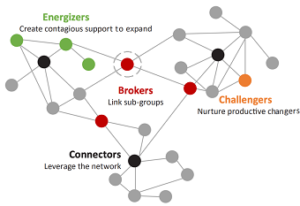
Unitas multiplex, networks and the beatitudes
Among the main concepts developed by Edgar Morin are cosmic Dasein (similar to Heidegger’s Dasein but expanded to the cosmic and similar to Teilhard Chardin’s Cosmic Christ), hominization and human identity, which is also linked to anthropolytic, but a fundamental and new is Unitas Multiplex.
Edgar Morin are cosmic Dasein (similar to Heidegger’s Dasein but expanded to the cosmic and similar to Teilhard Chardin’s Cosmic Christ), hominization and human identity, which is also linked to anthropolytic, but a fundamental and new is Unitas Multiplex.
According to Jean Ladriére Unitas Multiplex is “a system is a complex object, made up of distinct components joined together by a certain number of relationships”, and this both combines with the concept of social networks (not media) and Morin’s complexity, and Here we will establish a set of relationships with the biblical virtues of the beatitudes.
In a complex system, a certain number of relationships may be broken, what in social networks are called “structural holes” (Burt, 1992), weak ties (Granovetter, 1973) and small worlds of Duncan Watts (1998)
A system represented as a social network is a structure that connects nodes (forms a mathematical graph), generally each of these nodes are people, and links between nodes, representing relationships between these people (GRANOVETTER, 1973).
For Granovetter, bridges are links that enable weak ties, those that are on the periphery of the network or that are only reached by some nodes.
But neither the network theory nor the unitas multiplex theory establish the virtues that enable greater contact between these nodes, and as all these nodes can be reached, talking about empathy and bonds of solidarity is little, the biblical beatitudes can help.
Jesus climbs a mountain and speaks to a crowd of people, not just the disciples but everyone who wants to hear him (Mt 5:3-12):
“Blessed are the poor in spirit, for theirs is the Kingdom of Heaven. Blessed are the afflicted, for they will be comforted. [the weak ties]
Blessed are the meek, for they will possess the earth. Blessed are those who hunger and thirst for righteousness, for they will be satisfied. [the strong ties]
Blessed are the merciful, for they will obtain mercy. Blessed are the pure in heart, for they will see God. [empathy]
Blessed are those who promote peace, for they will be called children of God. Blessed are those who are persecuted for the sake of righteousness, for theirs is the Kingdom of Heaven!
Blessed are you when people revile you and persecute you and falsely say all kinds of evil against you because of me. Rejoice and be glad, for your reward will be great in heaven” [keeping the net united to the mystical body or “cosmic dasein”].
It seems heroic, or utopian, but if we want a peaceful Homeland, it’s a good recipe.
BURT, R. S. The social structure of competition. In: NOHRIA, N.; ECCLES, R. G. Networks and organizations: structure, form and action. Boston: Harvard Business School, 1992.
GRANOVETTER, M. S. The strength of weak ties. American Journal of Sociology, Chicago, vol. 78, no. 6, p. 1360-1380, May 1973.
WATTS, D. J.; Strogatz, S. H. (1998). “Collective dynamics of ‘small-world’ networks” (PDF), NATURE, VOL 393, 4 June.









